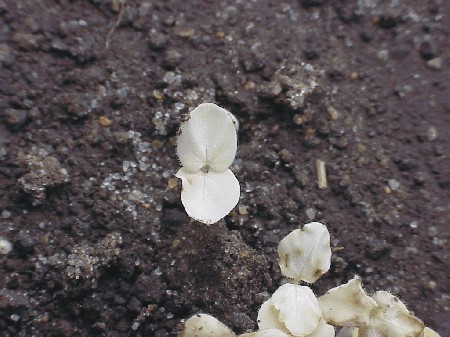Chapter 18: MOA Part 4 – Photosynthesis Inhibitors (PPO & Pigment Inhibitors)
18.7 Herbicides that Inhibit Pigments
Herbicides that inhibit the biosynthesis of carotenoids may do so early in the critical pathways. Photodynamic damage results due to cellular harm caused by absorption of light energy by a molecule unable to safely dissipate the energy. In the absence of carotenoids, chlorophyll molecules are also much more susceptible to bleaching in sunlight. With no pigments, the plants cannot carry out photosynthesis and will die once reserves of nutrient energy in the seed are depleted.
Inhibition of carotenoid biosynthesis at the phytoene desaturase step (PDS) – Group 12 (HRAC Group F1)
Components in the carotenoid biosynthetic pathway that have proven to be effective sites for herbicides are the desaturase enzymes. These enzymes are dehydrogenases that remove hydrogen atoms and electrons from molecules, forming double bonds. In the carotenoid biosynthetic pathway, there are three successive desaturase steps between phytoene and lycopene. The addition of these additional double bonds is critical for the ability of carotenoids to quench triplet chlorophyll molecules and singlet oxygen species. Herbicides such as norflurazone (pyridiazinone family) inhibit the desaturase enzymes and block the biosynthesis of carotenoids. Herbicide treated plants are then very sensitive to photodynamic damage.
Inhibition of 4-hydroxyphenyl-pyruvate-dioxygenase (HPPD) – Group 27 (HRAC Group F2)
Other herbicides also affect the desaturation process in carotenoid biosynthesis, but do so indirectly. Examples are the isoxazole and triketone herbicides which inhibit the enzyme p-hydroxyphenylpyruvate dioxygenase (HPPD). This enzyme is located in the biosynthetic pathway for plastoquinone biosynthesis and plastoquinone is a cofactor for the desaturase enzymes. By inhibiting p-hydroxyphenylpyruvate dioxygenase (HPPD), the biosynthesis of carotenoids is also inhibited.
Bleaching: Inhibition of carotenoid biosynthesis (unknown target) – Group 11 (HRAC Group F3); DOXP Synthase Inhibitors – Group 13 (HRAC Group F4)
“The isoxazolidinone herbicide clomazone and the triazole herbicide amitrol are examples of this group. The modes of action of these herbicides are not clearly illustrated. Recent evidence, however, suggests that clomazone is metabolized to another form of clomazone, which is herbicidal active and inhibits 1-deoxy-D-xyulose 5-phosphate synthase (DOXP), a key component to plastid isoprenoid synthesis. Amitrole inhibits accumulation of chlorophyll and carotenoids in the light, although the specific site of action has not been determined.” (http://herbicidesymptoms.ipm.ucanr.edu/MOA/Carotenoid_biosynthesis_inhibitors/ )
Pigment Inhibitors – Groups 11, 12, 13, 27


Review and Reflection